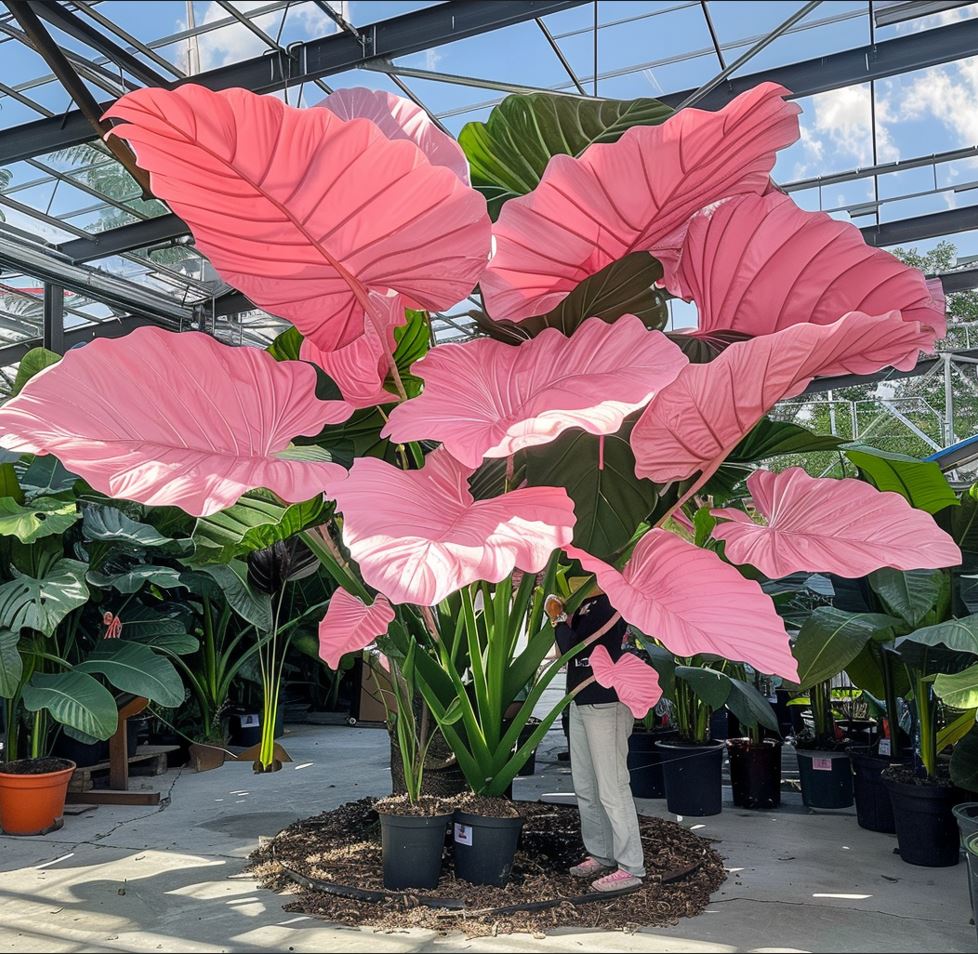The Colocasia plant, often referred to as Elephant Ear or Taro, is a captivating botanical specimen with a long history of cultivation and culinary significance. This genus of flowering plants, belonging to the Araceae family, is native to Southeast Asia and the Indian subcontinent. Renowned for its large, heart-shaped leaves and versatile uses, Colocasia has been an integral part of various cultures around the world.
Taxonomy and Distribution
:max_bytes(150000):strip_icc()/illustris_elephants_ear-3c5efb2af5de468ca098f984863238df.jpg)
Colocasia encompasses several species, with Colocasia esculenta being the most widely cultivated. These plants are characterized by their robust growth habit, typically reaching heights of several feet. The leaves, which can grow up to three feet in length, exhibit a striking range of colors, from deep green to vibrant shades of purple and black.
Colocasia plants thrive in tropical and subtropical regions. They prefer moist, fertile soils and ample sunlight. While they are often grown as ornamental plants, their corms, leaves, and petioles are also used as food sources in many parts of the world.
Cultivation and Care
Cultivating Colocasia is a rewarding endeavor for gardeners. Here are some essential tips for growing these magnificent plants:
Planting
Timing: Plant Colocasia corms in the spring after the last frost.
Watering

Colocasia plants have high water requirements. Keep the soil consistently moist, especially during hot, dry weather. However, avoid overwatering, as this can lead to root rot.
Fertilizing
Apply a balanced liquid fertilizer every two weeks during the growing season.
Overwintering
In regions with cold winters, Colocasia corms need to be dug up and stored indoors. Dig them up before the first frost and store them in a cool, dry place.
Culinary Uses of Colocasia
Colocasia has been a staple food in many cultures for centuries. The corms, leaves, and petioles of the plant are all edible, although they contain calcium oxalate crystals, which can cause irritation to the mouth and throat if not properly prepared.
Corms

Colocasia corms, also known as taro roots, are a rich source of carbohydrates, protein, and vitamins. They can be boiled, roasted, or fried. In some cultures, they are fermented to produce a starchy paste called poi.
Leaves and Petioles
The leaves and petioles of Colocasia can be cooked like spinach or used to wrap other foods. They are often boiled or steamed to remove the calcium oxalate crystals.
Ornamental Uses of Colocasia
Beyond their culinary significance, Colocasia plants are prized for their ornamental value. Their large, dramatic leaves add a tropical touch to gardens and landscapes. Here are some popular ornamental Colocasia varieties:
Black Magic: Known for its deep purple foliage, Black Magic is a striking addition to any garden.

The Colocasia plant, with its versatile uses and captivating beauty, continues to fascinate and delight people around the world. Whether you’re interested in its culinary potential or its ornamental value, Colocasia is a plant that deserves a place in your garden or on your dinner table.
Colocasia Plant

:max_bytes(150000):strip_icc()/illustris_elephants_ear-3c5efb2af5de468ca098f984863238df.jpg?resize=1116,1280&ssl=1)